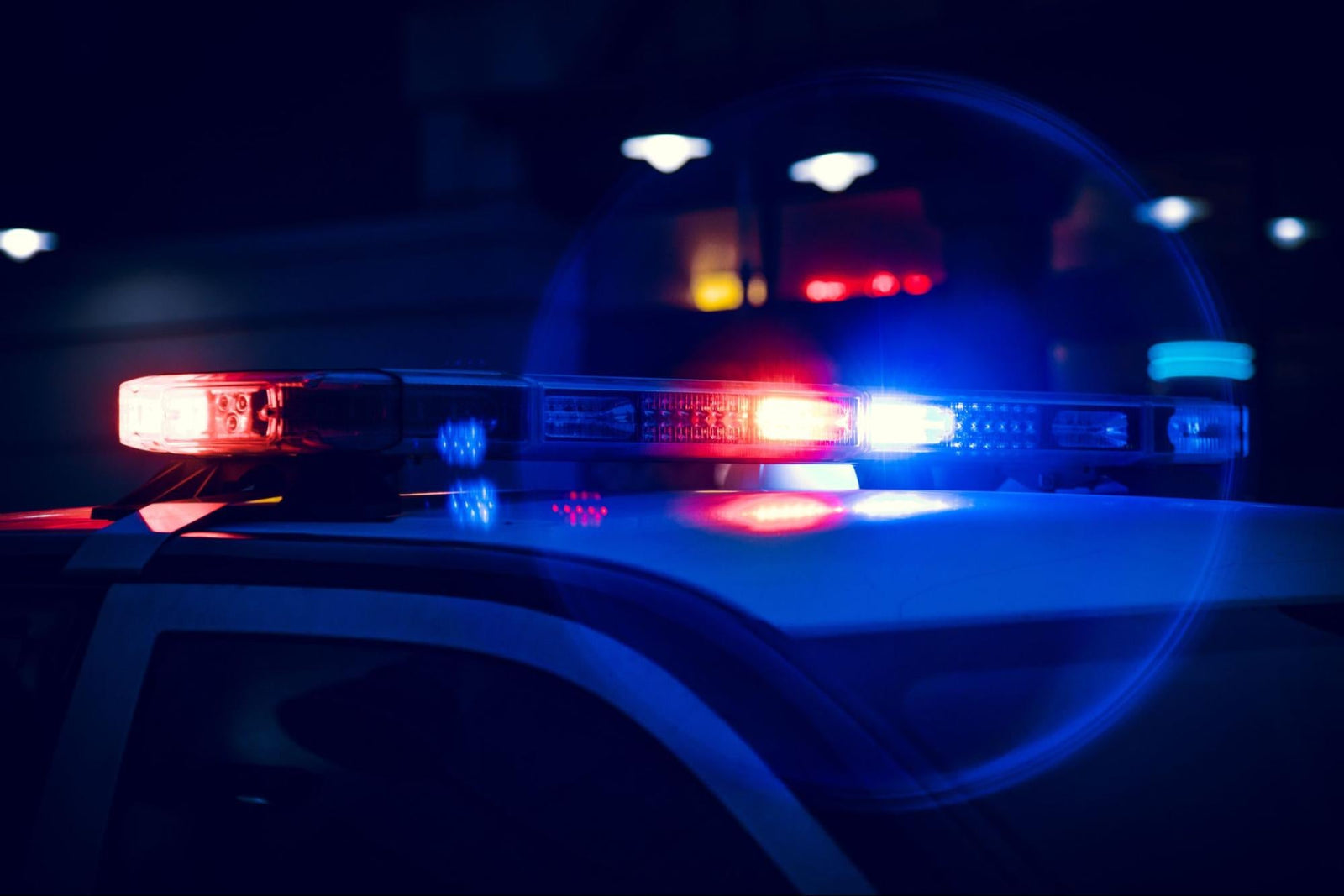Whether you're a first responder, emergency worker, or safety-conscious driver, having properly installed emergency lights can be crucial for visibility and safety during urgent situations. But how do you wire emergency lights to your vehicle?
The basic process involves connecting the lights to a 12V power source through a switch, using appropriate gauge wires (typically 16-18 AWG), fuses for protection, and securing all connections properly while following local regulations regarding emergency lighting.
While this basic overview gives you the essential steps, there are critical details about proper wire routing, switch placement, and safety considerations that you'll need to know to ensure a safe and effective installation. Continue reading to learn the step-by-step process and avoid common installation mistakes that could lead to electrical problems or safety hazards.
Step-By-Step Guide To Wiring Emergency Lights
1. Gather Your Materials
Before you get your hands dirty, make sure you have:
-
Emergency Lights (LED units are common for their low power draw)
-
Appropriate-Gauge Wire (16–18 AWG typically works for most installations)
-
On/Off Switch (or a multi-switch panel if you’re running multiple sets of lights)
-
Fuses and Inline Fuse Holders (usually 10–15 amp, depending on your light’s specs)
-
Wire Connectors (butt connectors, ring terminals, etc.)
-
Basic Tools (wire strippers, crimpers, drill, zip ties, multimeter, etc.)
Pro Tip: Consider using a fuse block or relay if you plan to install several lights or higher-powered units. This ensures each circuit is individually protected and easier to troubleshoot.
2. Plan Your Wire Routing Path
Careful planning can save you a lot of headaches later:
-
Avoid Heat & Moving Parts: Keep wires clear of the exhaust system and steering components.
-
Look for Existing Grommets: Often, you can route wires through factory grommets in the firewall instead of drilling new holes.
-
Secure With Zip Ties: Prevent vibrations and friction damage by securing wires along the frame or under trim panels.
3. Mount Your Lights
Follow the manufacturer’s instructions for mounting. Common locations include:
-
Front Grille or Push Bumpers
-
Rooftop or Light Bar
-
Rear Hatch or Bumper
-
Side Mirrors or Fenders (for side-visibility lights)
Ensure each fixture is securely attached and aligned for optimal visibility. Double-check the angles—some lights offer adjustable brackets for fine-tuning.
4. Connect the Wires
Now for the main event: wiring!
-
Attach Positive Lead:
-
From the emergency lights’ positive wire to one terminal on the switch (or to the relay if you’re using one).
-
Label your wires or use color-coded ones to avoid confusion.
-
Switch to Battery:
-
Run a separate wire from the other switch terminal to the positive battery terminal.
-
Install an inline fuse holder within six inches of the battery to protect the circuit.
-
Ground Connection:
-
Connect the negative wire from your lights to a clean, unpainted ground point on the vehicle’s chassis.
-
Use ring terminals for a secure fit, and scrape away paint or corrosion to ensure a solid connection.
-
Test for Continuity:
-
Use a multimeter to check for shorts or loose connections before switching on the power.
Safety Note: Always disconnect your battery’s negative terminal before working on electrical circuits to prevent accidental shorts or injuries.
For some specific installation tips, check out our YouTube channel, featuring videos like:
Local Regulations For Emergency Vehicle Lighting
Before installing any emergency lights, check your local laws regarding their use. Many jurisdictions have strict regulations about who can use emergency lights, what colors are permitted, and when they can be activated. Red and blue lights are often restricted to law enforcement and emergency responders only.
Volunteer firefighters and EMTs typically need proper documentation and permits to use emergency lights. Some areas allow amber lights for civilian use in specific situations, such as construction or maintenance vehicles.
For more information on federal regulations, visit the U.S. Department of Transportation.
Common Installation Mistakes To Avoid
The most frequent error is inadequate wire protection. Always use proper gauge wire, install fuses correctly, and protect wires with split loom tubing where they pass through metal surfaces. Avoid routing wires near exhaust components or areas where they might get pinched.
Another critical mistake is improper grounding. A poor ground connection can cause flickering lights or complete system failure. Always clean the ground connection point thoroughly and use appropriate ring terminals for secure connections. Additionally, weatherproof all connections to prevent corrosion and potential short circuits.
Power Requirements And Battery Considerations
Emergency lights can put significant strain on your vehicle's electrical system. Most LED emergency lights draw between 2-5 amps each, while traditional strobe lights can draw considerably more. Consider the total amperage draw of your setup and ensure your vehicle's alternator and battery can handle the load, as not all emergency lights draw the same current:
-
LED Lights: Typically 2–5 amps per unit. Very efficient and the most popular option.
-
Strobe or Halogen Lights: Can draw significantly more, requiring heavier wiring and larger fuses.
Tips for High-Power Setups:
-
Upgrade Your Battery: If you routinely run lights with the engine off, opt for a high-capacity battery (larger CCA and reserve capacity).
-
Consider a Second Battery or Alternator Upgrade: Essential for vehicles that serve as mobile command centers or carry multiple power-hungry accessories (radios, light bars, sirens, etc.).
If you're installing multiple lights or high-powered units, you might need to upgrade your battery or add an auxiliary battery. This is particularly important for vehicles that need to run emergency lights while the engine is off. Always use a battery with sufficient cold cranking amps (CCA) and reserve capacity.
Maintenance And Troubleshooting Tips
Regular maintenance is crucial for keeping your emergency lights functioning reliably. Inspect all wiring connections monthly for signs of corrosion or looseness. Check that all mounting points remain secure and that no wires have become damaged from exposure or vibration.
Common issues include flickering lights, intermittent operation, or complete failure. Start troubleshooting by checking fuses and connections. Use a multimeter to verify proper voltage at various points in the circuit. Pay special attention to ground connections, as they're often the source of problems. Keep spare fuses and basic repair materials in your vehicle in case of emergency repairs.
If lights appear dimmer compared to normal or cause other electrical systems to malfunction, this could indicate an overloaded circuit or failing alternator. In these cases, consult a professional automotive electrician for a thorough diagnosis and potential upgrades to your vehicle's electrical system.
Why Are Emergency Lights Important?
Emergency lights aren’t just about looking official—they serve a vital function:
-
Increased Visibility: Properly installed and well-maintained lights can dramatically increase visibility in low-light or high-stress situations.
-
Improved Safety: When seconds count, ensuring other drivers see you can reduce accidents and help you reach your destination safely.
-
Regulatory Compliance: For certain roles—like volunteer firefighters or construction crews—using the correct type of emergency lights is part of the job and required by law.
Taking The Next Step
Before starting any emergency light installation, take the time to create a detailed installation plan that includes a wiring diagram, a list of all necessary materials, and documentation of your local regulations regarding emergency lighting. Having this comprehensive plan will not only make the installation process smoother but will also help ensure you create a safe and legally compliant emergency lighting system that serves your needs effectively.
FAQs
How should emergency lights be wired?
Emergency lights are typically connected to a constant, unswitched power source so their internal batteries stay charged. They’re usually wired to the building’s AC supply via a dedicated circuit, ensuring the lights automatically switch on during a power loss.
Can I put emergency lights on my car?
Installing emergency or warning lights on a personal vehicle is highly regulated. In most regions, only certain vehicles (e.g., law enforcement or emergency services) may legally display flashing or colored warning lights. Always consult local laws before adding them to a car.
Do emergency lights need their own circuit?
Yes. Codes often require emergency lighting to be on a dedicated, unswitched circuit to ensure constant power. This isolates the emergency lights from other loads, increasing reliability if other circuits fail.
Do emergency lights have to be hardwired?
In most commercial or public settings, yes. Hardwiring provides continuous power for charging internal batteries and ensures the fixtures aren’t accidentally disconnected, making them more dependable during an outage.
Do I need a professional to install my emergency lights?
While many DIYers handle the process themselves, if you’re not confident with vehicle electronics or your installation involves complex strobes and multiple circuits, it’s wise to consult a professional auto electrician.
Can I run multiple emergency lights off one switch?
Yes, but make sure your switch and fuse can handle the total amperage draw. Using a relay or multi-switch panel for multiple lights is often safer and more organized.
What if my local regulations change?
Stay up to date by periodically checking with local authorities or your state’s DMV. Laws regarding emergency lighting can change over time.


